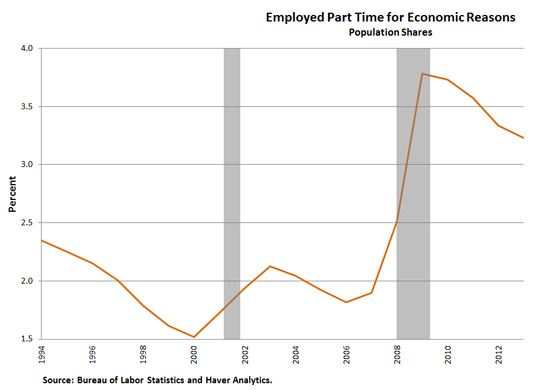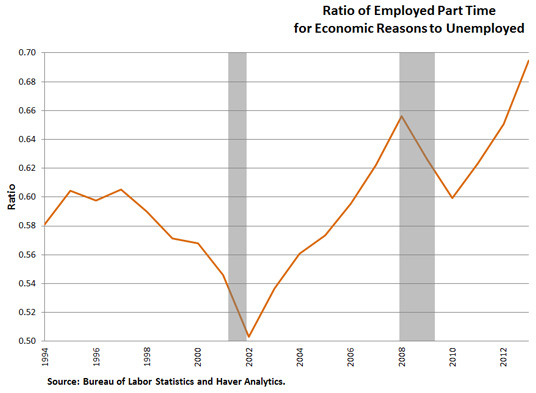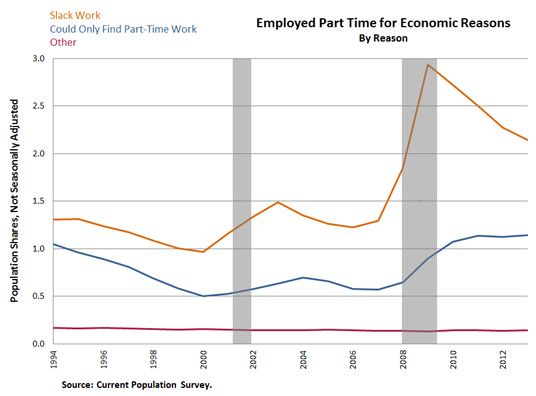Working Part Time — But Not by Choice
The unemployment rate has fallen considerably from its recent peak of 10 percent in October 2009 to 6.2 percent in July 2014. However, there are still concerns that the number of individuals who are working part time for economic reasons (PTER)1 remains elevated while the number of unemployed individuals and marginally attached individuals has been decreasing. A recent article in The Regional Economist examined the data on PTER in the aftermath of the Great Recession and compared those numbers with the data from earlier recessionary periods.
Maria Canon, an economist with the Federal Reserve Bank of St. Louis, and Marianna Kudlyak and Marisa Reed, both with the Federal Reserve Bank of Richmond, found that the ratio of PTER to unemployment behaved similarly to the way it behaved previously during a recession. It increased at the business cycle trough and reached its highest point at the business cycle peak.
The figure below shows those working PTER as a share of the civilian noninstitutional working-age population. The fraction of PTER as a share of the population was higher in the latest recession than in the previous recession.2 During the Great Recession, the series reached 3.8 percent in 2009. It then declined to 3.2 percent in 2013.

The next figure shows the ratio of those working PTER to the number of unemployed workers. Unlike the previous ratio, which appears to be countercyclical, the figure below shows a procyclical ratio: decreasing during recessions and increasing afterward. This means that during recessions PTER grows at a slower rate than unemployed workers. The authors noted, “The fraction of PTER to the number of unemployed workers was about 10 percentage points higher at the trough of the Great Recession than at the trough of the 2001 recession.”

The final figure breaks down those working PTER by reason. Unlike the percentage of those working PTER because they can only find part-time work, which is at a level similar to those observed in previous downturns, the share citing slack work/business conditions spiked in 2009 but has since been declining.

The authors concluded, “As the economy continues its recovery from the Great Recession, we expect the number of those working part time for economic reasons to fall. However, it is probable that the ratio of PTER to unemployment will continue to increase as it has historically done. That is because, during the recoveries, the number of unemployed people typically declines faster than the number of those working part time for economic reasons.”
Notes and References
1 Individuals are counted as PTER if they work less than 35 hours per week, want to work full time and cite slack business conditions or inability to find a full-time job as reasons for not working full time.
2 The National Bureau of Economic Research defines the latest recession as December 2007 through June 2009 and the previous recession as March 2001 through November 2001.
Additional Resources
- Regional Economist: Is Involuntary Part-time Employment Different after the Great Recession?
- On the Economy: What Private Payroll Employment Numbers Say about the Labor Market
- On the Economy: The Effects of Extending Unemployment Insurance Benefits
Related Topics
This blog offers commentary, analysis and data from our economists and experts. Views expressed are not necessarily those of the St. Louis Fed or Federal Reserve System.
Email Us
All other blog-related questions


